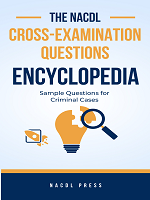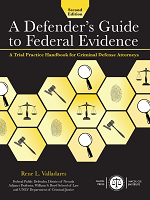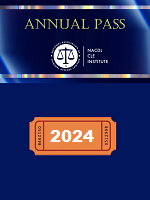Access to The Champion archive is one of many exclusive member benefits. It’s normally restricted to just NACDL members. However, this content, and others like it, is available to everyone in order to educate the public on why criminal justice reform is a necessity.
I have in my hand the Eighth Circuit’s approved budget for the experts in a federal death penalty trial set for January. The client shall remain nameless to protect the accused from the rants of his lawyer in this magazine.
We first proposed our budget back in February, I think. Due to a somewhat understandable miscommunication of sorts, the magistrate judge sat on the budget a little long. I won’t bore you with the details, but we met with the district judge over the budget in June. We sought what we certainly thought was a reasonable amount1 for experts, including the mitigation expert. Future dangerousness is a big issue, as it is in most federal death cases.
In late September, the district judge got back from the chief judge of the Eighth Circuit that we were approved for only about two-thirds of what we asked for. So, the January trial date is now blown because of the bureaucracy of death penalty funding.2 The joys of budgeting a CJA capital defense. Hurry up and wait. Scrimp and save.
And the relative cost of defending this man’s life? All in? Less than three minutes of the Iraq War.
We have a shiny new courthouse in Little Rock. Eighty-nine million dollars worth. Out front is the architectural art pictured here.
Work on this started at the end of the courthouse construction, as it was about to open. Interesting piece of work. Most people, including me, thought it was a pile of scrap metal until it started working.3 Those in the know were embarrassed at the cost: $391,000 in Little Rock. The chief judge at the time of approval said, “I’m just horrified by it. It’s nothing like what we agreed to.”4
What is it? More important, why is it?
Did you know that one-half of one percent of federal5 or state6 courthouse construction cost is usually set aside for “public art”?7 Government art is important:
These permanent installations of contemporary art for the nation’s civic buildings afford unique opportunities for promoting the integration of art and architecture, and facilitate a meaningful cultural dialogue between the American people and their government.8
It took me a while to make the connection that this water sculpture just might be intended to be a modernistic “fountain of justice.” That is, after all, the title of a memorable front page article in the New York Times about the Tammany scandal about an alleged rigged grand jury.9 There is a book on “natural law” by that title.10 There is the Gerechtigkeitsbrunnen (“Fountain of Justice”) in Bern, Switzerland, constructed in 1543 with the goddess of justice on top that became a model for all others and our vision of what the goddess of justice should look like.11
The name of our piece: “Echo Dynamics.” What is that supposed to mean? It doesn’t look like a fountain. More like a modernistic ballpark urinal. The CSOs at my courthouse had to run off a homeless man whom they caught washing his clothes in it. What happens at night when they aren’t there to supervise? But I digress.
What is the average cost of a CJA appointment? In my district, I asked a couple of defense lawyers, and we think it is about $3,000 per case, considering all the guilty pleas that the three points for acceptance force our clients to take. So, 130 indigent criminal defendants could be represented for that, or salary and fringe for two U.S. district judges for a year. Or three Yankees games for A-Rod.
This is a time when federal courthouse construction projects are considering eliminating the perk of each judge having his or her own courtroom because of construction costs,12 but that certainly is a guide rather than a mandate. Sort of like the Constitution to a Guantánamo detainee.
I love art. Like anyone, I just choke at the price tag of some stuff, and I choke at this. I share the judge’s view that she is “horrified,” but I’m just horrified at the price. Who approved of that price tag? Is this the Halliburton of “no bid” courthouse construction projects?
And, I appreciate “a meaningful cultural dialogue” between the courts, as government, and our citizens. But the real dialogue is what happens in the courtroom, not having a ballpark urinal with rushing water to stand and admire, or ponder, while I contemplate what just happened to my client inside that building. If that is to be a Freudian metaphor for what happens inside, move it to another courthouse where it speaks to what happens inside. Thankfully, in the Eastern District of Arkansas, justice is in the dialogue.
Notes
- Since it is under seal, I won’t tell you the amount.
- All is not lost. Likely the death squad at the Department of Justice will be replaced under the next attorney general, so we can attempt to de-certify this case.
- Linda Satter, Harsh Judgment Passed on Courthouse Fountain, Arkansas Democrat-Gazette at 7, 11 (Aug. 11, 2008).
- Id. at 7, quoting U.S. District Judge Susan Webber Wright.
- Id., quoting Tye DeBerry of the GSA. See General Services Administration, Art in Architecture Program, at www.gsa.gov.
- See, e.g., Ronald Williamson, Courthouse Art a Splash of Color, Beauty, Daytona Beach News-Journal (Aug. 30, 2008).
- $1.6 million in Eugene. Courthouse Quirks, Eugene Weekly (Dec. 7, 2006).
- See note 3, quoting Tye DeBerry of the GSA.
- Fountain of Justice Poisoned, N.Y. Times, Nov. 3, 1894, at 1.
- John Ching-Hsiung Wu, Fountain of Justice: A Study in the Natural Law (1955).
- Source: Wikipedia. Remember, Wikipedia is such a venerable and reliable source that an immigration judge’s reliance on it required reversal of findings of fact based on it. Badasa v. Mukasey, 540 F.3d 909, 910 (8th Cir. 2008), quoting R. Jason Richards, Courting Wikipedia, 44 Trial 62 (Apr. 2008) (“Since when did a Web site that any Internet surfer can edit become an authoritative source by which law students could write passing papers, experts could provide credible testimony, lawyers could craft legal arguments, and judges could issue precedents?”).
- Judicial Conference of the United States, 2007 GSA U.S. Courts Design Guide 2-6 (2005) (250-page .pdf on GSA Web site). n






